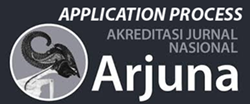Implementasi Konsep Quality Home Care Dalam Meningkatkan Kesehatan Gigi Anak Disabilitas di SLB Kota Banda Aceh
DOI:
https://doi.org/10.59653/jcsse.v2i03.1148Keywords:
Children with special needs, Dental health, Cavities, Parental involvement, Quality home careAbstract
Children with special needs, such as those with Down syndrome, often face challenges in their dental growth and health. Common issues include cavities, misaligned teeth, and gum disease. Difficulties in maintaining oral hygiene independently further exacerbate these conditions. Given the risk of caries that can affect a child's development and the lack of parental knowledge about dental health, early prevention through understanding and parental involvement becomes crucial. Observations at the special education school (SDLB) revealed that 63% of the children experienced dental caries, and their average oral hygiene was rated poorly with a score of 2.6. This data indicates a condition that falls short of expectations relative to government health standards. Children with intellectual disabilities often struggle to learn self-care skills and require assistance both at home and at school. In this context, parents play a central role in teaching these skills to their children. This community service program was conducted using a descriptive method, targeting both children and their mothers as respondents. Data analysis was performed using a univariate approach. The dental nursing care services were planned over 5 days, totaling 40 effective hours with three visits. Interventions included educating mothers about maintaining oral health, simulating and demonstrating proper tooth brushing techniques, and applying the concept of quality home care for parents. This included guidance, monitoring, and providing dental care that can be performed at home as preventive measures. The results of this community service activity indicated an increase in parents' knowledge and skills in caring for their children's dental health. This positively impacted the oral hygiene of the children at SDLB and fostered a change in parental behavior in supporting their children to brush their teeth independently.
Downloads
References
Adyatmaka, I. (2008). Universitas Indonesia Model Simulator Risiko Karies Gigi. 174.
Hidayat R., T. A. (2016). Kesehatan Gigi dan Mulut. 1 ed. CV Andi Offset (Penerbit ANDI.
Houwink, B. et al. (1993). Ilmu Kedokteran Gigi Pencegahan. In S. Suryo (Ed.), Ilmu Kedokteran Gigi Pencegahan. UGM.
Jabber. (2011). Dental caries experience, oral health status and treatment needs of dental patients with autism. JAPPL Oral SCI, 19 (3) 212.
Jo, T. M., Ying, C. C., Ab-Murat, N., & Rohani, M. M. (2018). Oral Health Behaviours and Preventive Dental Care Experiences Among Patients with Special Health Care Needs at Special Care Dentistry Clinic, University of Malaya. Annals of Dentistry University of Malaya, 25(1), 23–30.
Kisia, D. (2023). BENTUK POLA ASUH ORANG TUA TERHADAP KEMANDIRIAN BINA DIRI ANAK PENYANDANG CEREBRAL PALSY DI DESA KARANGREJEK, KECAMATAN WONOSARI, KABUPATEN GUNUNGKIDUL. Universitas Atma Jaya Yogyakarta.
Leal, S. C., Barros, B. V., Cabral, R. N., Ferrari, J. C. L., de Menezes Abreu, D. M., & Ribeiro, A. P. D. (2019). Dental caries lesions in primary teeth without obvious cavitation: Treatment decision‐making process. International Journal of Paediatric Dentistry, 29(4), 422–428.
Naidoo, M. (2018). The Oral Health Status Of Children With Autism Spectrum Disorder In Kwazulu-Nata South Africa. BMC Oral Health, 18 : 165.
Nowak, A. J., & Casamassimo, P. S. (2002). The dental home: a primary care oral health concept. The Journal of the American Dental Association, 133(1), 93–98.
Oredugba F.A, Akindayomi, Y. (2008). Oral health status and treatment needs of children and young adults attending a day centre for individuals with special health care needs. In BMC Oral Health.
Rahayu E. S, L. S. (2019). Peran Orang Tua, Guru Dan Tenaga Kesehatan Dalam Kesehatan Gigi Dan Mulut Anak Disabilitas DI SDLB KOTA BANDA ACEH.
Regita, C. S. (2024). Hubungan Perilaku Pemeliharaan Kesehatan Gigi dan Mulut Anak Terhadap Status Kebersihan Gigi dan Mulut pada Usia 9-11 Tahun SDN 21 Lubuk Alung. Universitas Andalas.
RI, D. (2010). Pedoman pelayanan kesehatan anak SDLB bagi petugas kesehatan.
Riskesdas. (2018). Badan Penelitian dan Pengembangan Kesehatan Kementerian RI.
Sutono, E. V., Triyanto, R., & Suharja, E. S. (n.d.). PARENTING PATTERN OF PARENTS WITH THE LEVEL OF ORAL HYGIENE FOR CHILDREN WITH MENTAL RETARDATION.
Suwelo, I. S. (1992). Karies Gigi pada Anak dengan Pelbagai Etiologi (Kajian Pada Anak Usia Prasekolah).
Worotitjan, I., Mintjelungan, C. N., & Gunawan, P. (2013). Pengalaman karies gigi serta pola makan dan minum pada anak Sekolah Dasar di Desa Kiawa Kecamatan Kawangkoan Utara. E-GiGi, 1(1).
Yadav, K. (2016). Primary Health Center Approach for Oral Health Related Knowledge, Attitude and Practice among Primary Health Care Workers of Western India. Journal of Dental Health, Oral Disorders & Therapy, 5(3), 5–8. https://doi.org/10.15406/jdhodt.2016.05.00150
Downloads
Published
How to Cite
Issue
Section
License
Copyright (c) 2024 Fitriani, Eka Sri Rahayu, Nurhaida, Reca, Teuku Salfiyadi

This work is licensed under a Creative Commons Attribution-ShareAlike 4.0 International License.
Authors who publish with this journal agree to the following terms:
- Authors retain copyright and grant the journal right of first publication with the work simultaneously licensed under a Creative Commons Attribution-ShareAlike that allows others to share the work with an acknowledgement of the work's authorship and initial publication in this journal.
- Authors are able to enter into separate, additional contractual arrangements for the non-exclusive distribution of the journal's published version of the work (e.g., post it to an institutional repository or publish it in a book), with an acknowledgement of its initial publication in this journal.
- Authors are permitted and encouraged to post their work online (e.g., in institutional repositories or on their website) prior to and during the submission process, as it can lead to productive exchanges, as well as earlier and greater citation of published work (See The Effect of Open Access).























